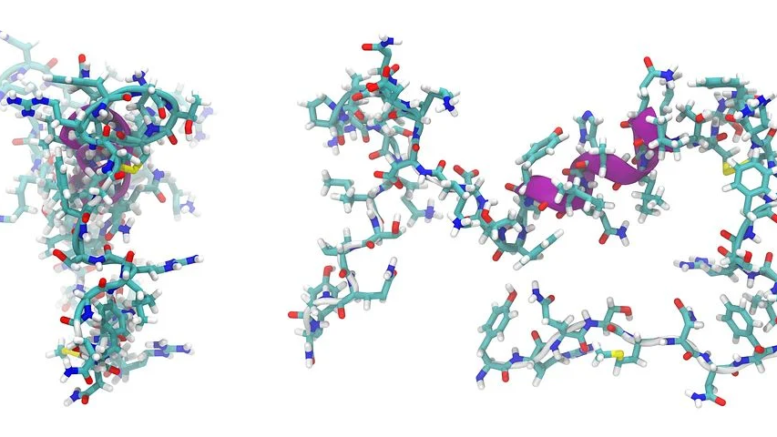Human muscle protein anabolic responses to EAA feeding in the fasted state are typically measured by examination of ribonucleic acid (RNA) and protein expression. This is made possible by advances in stable isotope tracer techniques.
The branched-chain amino acids are potent anabolic stimulants for human muscle [1-8]. These amino acids activate the mTORC1 protein kinase in the muscles and promote MPS.
1. Leucine
The amino acid leucine enhances insulin sensitivity of muscle protein synthesis. Thus, a low concentration of insulin is sufficient to stimulate protein synthesis when it is accompanied by 2.7 g of dietary protein that contains at least the essential amino acids (EAAs).
A variety of tracer methods are available to measure EAA metabolism at the whole-body level. However, the most popular approach uses L-[1-13C] leucine as an infused tracer and 13CO2 as a product of its oxidation in muscle.
2. Isoleucine
Isoleucine is one of the three branched chain amino acids (BCAAs) alongside leucine and valine. It is intermediate for its ability to stimulate muscle protein synthesis, stronger than valine but weaker than leucine.
can stimulate glucose uptake in a muscle cell via the p70S6K/aPKC pathway, which is different to how leucine works via mTOR. It also has anti-inflammatory properties. It is found in meat, fish, dairy products and legumes. It’s also available in supplements. It’s an essential amino acid that we cannot manufacture and therefore must obtain through the diet or supplements.
3. Valine
The branched chain amino acids (BCAAs; leucine, isoleucine and valine) have spawned a multimillion-dollar industry of nutritional supplements because of their claimed muscle protein anabolic properties. However, theoretical considerations and empirical evidence show that dietary supplements of BCAAs can only induce a minimal stimulation of protein synthesis in the postabsorptive state because other EAAs are required for protein synthesis.
Stable isotope methods have enabled direct measurement of rates of protein synthesis and degradation in human muscle. Advances in molecular biology techniques have now uncovered many of the signaling pathways involved in AA “sensing” by muscles and other tissues.
4. Lysine
Lysine is an essential amino acid (building block of protein) that cannot be produced in the body and must be obtained through food. Also known as L-2,6-diaminohexanoic acid, lisina, lysine hydrochloride, and lysine monohydrochloride, it is found in meat, fish, eggs, dairy products, beans, nuts, and seeds. It is also available as a dietary supplement.
It has been shown to prevent cold sores and genital herpes outbreaks and enhance recovery from exercise. It also protects against oxidative damage to the lining of the gut and promotes calcium absorption.

5. Methionine
Methionine is unique among indispensable amino acids, because it can be converted to S-adenosylmethionine (SAM), the major methyl donor in the body. It also is used in cysteine synthesis and for the generation of the antioxidant glutathione.
T cells respond to antigens by upregulating methionine transport, which licenses the use of methyl donors for fundamental cellular processes that drive T lymphocyte proliferation and differentiation. Whether dietary methionine is required for these responses remains to be determined. The nutrient is absorbed in the small intestine and converted to its metabolites, including SAM.
6. Tyrosine
Skeletal muscles are a major repository for body proteins. They provide architectural support, enzymes to catalyze metabolic reactions, and signaling intermediates within and between cells.
The rate at which proteins appear and disappear from the circulation provides information about whole-body protein synthesis and breakdown. Protein degradation is dominated by irreversible hydroxylation and decarboxylation.
Because of its poor solubility, tyrosine can be a limited substrate for parenterally fed neonates. However, the solubility issue may be overcome by a high concentration of the precursor phenylalanine in parenteral nutrition solutions.
7. Cysteine
The amino acid cysteine stimulates protein synthesis in muscle and is needed for sulfate ion conjugation with glutathione. Increased protein synthesis leads to lower protein breakdown.
Dietary methionine and cysteine restriction improve aging cardiometabolic risk in rodents, but its effects in humans have yet to be demonstrated. Results from this pilot study comparing diets differing only in methionine and cysteine intake indicate that dietary restriction of these sulfur amino acids can lead to beneficial changes in plasma and urinary amino acid concentrations, serum FGF21, and subcutaneous adipose tissue gene expression in overweight adults.
8. Histidine
Histidine is an essential amino acid that is involved in muscle protein synthesis and in the regulation of blood sugar. It also helps make a brain chemical that plays a role in digestion, sleep and sexual function.
In a histidine-deficient diet, protein turnover and phenylalanine oxidation were increased in skeletal muscle. The hepatic portal vein amino acid concentrations were unaffected but the urinary excretion of histidine, threonine and lysine decreased in mice.
Large histidine pools in skeletal muscle are maintained by histidine synthesis or the conversion of histidine to carnosine (b-alanyl-L-histidine). Carnosine is thought to act as intracellular buffers, metal-ion chelators and free radical scavengers.
